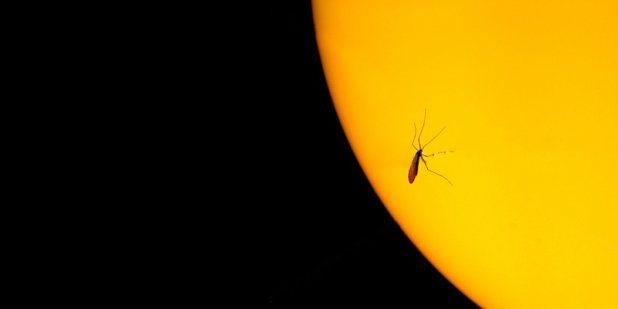- About
- Topics
- Picks
- Audio
- Story
- In-Depth
- Opinion
- News
- Donate
- Signup for our newsletterOur Editors' Best Picks.Send
Read, Debate: Engage.
Scientists all over the world are searching desperately for a malaria vaccine. In 2013 up to 2.7 billion dollars were given to research projects worldwide. But as long as the vaccine is not found, the World Health Organization (WHO) recommends artemisinin-combination therapies (ACT) as the only reliable means to treat malaria patients.
Pathogen resistance in sub-Saharan Africa would mean a 'meltdown' for the healthcare system
In Asia, the pathogen has already developed resistance to drugs based on artemisinin. Should this happen in sub-Saharan Africa, where about ninety percent of all cases of malaria occur, it would be a kind of 'meltdown' for the healthcare systems of the countries concerned.
A German researcher has now taken a potentially ground-breaking step forward in producing artemisinin. Peter Seeberger from the Max Planck Institute of Colloids and Interfaces in Potsdam (Germany) has developed a method by which artemisinin could be produced more efficiently, namely from the waste generated in previous production steps. In other words, the original plant is used twice.
New procedure would help most affected ones
With this new procedure, Seeberger claims, the price of ACTs could drop significantly, so that even the most affected groups, especially in african societies, could afford those life-saving remedies.
Artemisinin is extracted from a plant called 'artemisia annua' ('sweet wormwood'). Since there is only about one percent of artemisinin in that plant, large amounts need to be cultivated in order to produce the ingredient in sufficient quantities. The total production volume of artemisinin therefore depends on how many small scale farmers decide to put on Artemisia annua. Depending on market conditions, the price of the extracted artemisinin can change by up to 600%. A reliable production to match the global demand was therefore not yet possible.
There are two ways of getting artemisinin. The direct way is to extract it directly from the leaves of the sweet wormwood.
The second, more indirect path goes via a precursor of artemisinin, the so-called 'artemisinic acid', that was previously considered a waste product of direct extraction.
Meanwhile, this intermediate product artemisinic acid can also be produced using latest biotechnology. A US research team from Berkeley (California) has developed a method in which semi-synthetic artemisinic acid is grown from genetically modified yeast. The French drugmaker Sanofi already inaugurated a production plant in Garessio (Italy) in April 2013.
However, processing of artemisinic acid into artemisinin remains the bottleneck of the production of ACTs. With the methods used to date this last step was too expensive to be used on a large scale. But this bottleneck could have widened significantly with Peter Seeberger's new method.
It is a photochemical process; so light is essential. Artemisinic acid is sent through a thin transparent plastic tube that is wrapped around a light source, ensuring an even and constant flow. After 4.5 minutes pure artemisinin drips out of the hose.
Sanofi uses a photochemical process for obtaining artemisinin at its plant in Italy as well, but unlike the approach of the Potsdam researchers, the procedure used by the french scientists is not continuous. Sanofi's way is called the "batch" method, using large vessels, in which the reaction mixture must be pumped in and out over and over again. The reaction takes much longer because of the size of the vessels, so that many unwanted side products are formed. It is therefore very complicated to get the required degree of purity of the drug with this method.
Possibly the entire production of ACTs can be shifted into the affected countries
"Besides that, and probably surprising, the experimental setup of the new method is not very complex," Seeberger explains, "so it should be possible to shift the entire production of ACTs into the affected countries. They would therefore no longer be limited to mere suppliers of raw materials."
In fact, Seeberger is already planning a production facility in a malaria affected country for 2016. It's a little early to tell the exact location, he says, but a required number of small scale farmers of sweet wormwood can be found particularly in China and Vietnam in Asia as well as in Kenya and Madagascar in Africa.
With a yield of 65 percent Seeberger and his team at the Max Planck Institute in Potsdam are able to 'harvest' about 200 grams of artemisinin per day. What works in the lab does not necessarily work on a large scale, but Seeberger hopes that the envisaged plant will produce 10 tons per year in the first stage. The already equals about five percent of global annual demand.
